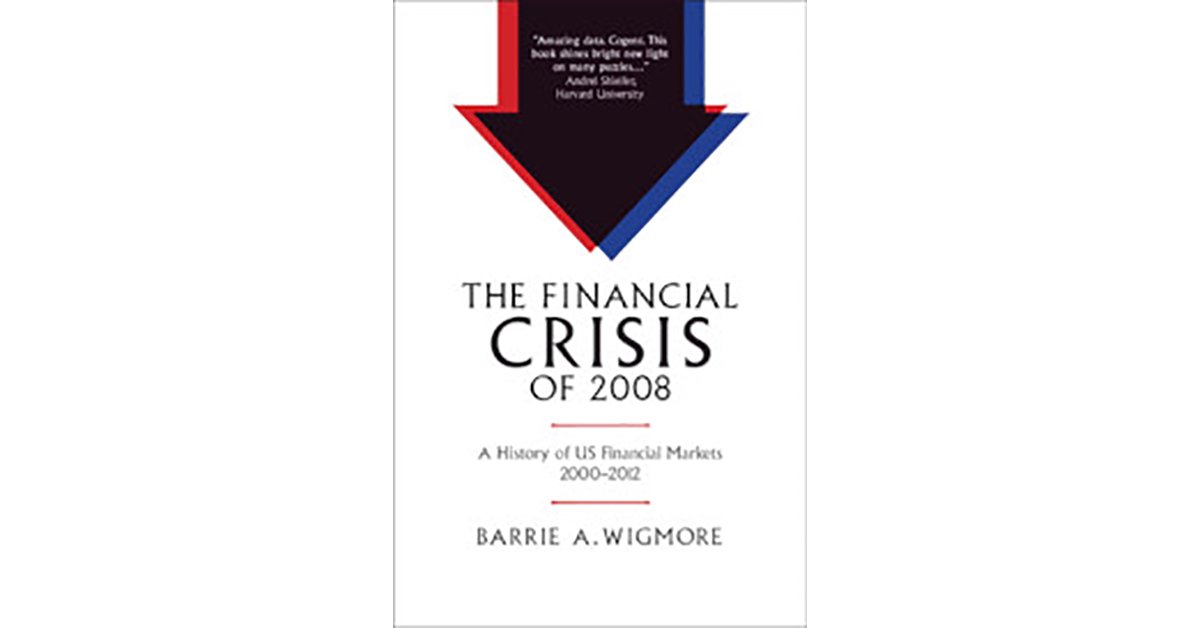Key Points:
1. Barrie Wigmore provides a comprehensive analysis of the financial crisis of 2008 based on his experience as an investment banker.
2. The crisis was primarily caused by shockingly high levels of leverage, particularly in government-sponsored enterprises like Fannie Mae and Freddie Mac.
3. The author presents compelling data showing that these institutions were exposed to the weakest credit sectors beyond what was mandated by the US Department of Housing and Urban Development.
4. Despite the warning signs, state and local government pension funds, insurance companies, and commercial and investment banking intermediaries continued to fund Fannie Mae and Freddie Mac.
5. The crisis began in the second half of 2007 when house prices leveled off and consumers’ debt servicing capability deteriorated.
6. Subprime mortgages started defaulting at high rates, causing the value of asset-backed securities and private residential mortgage-backed securities to decline.
7. The collapses of institutions like New Century, Fremont General, Countrywide Financial, IndyMac, and Washington Mutual were characterized by extreme leverage, complex balance sheets, and poor-quality assets or liabilities.
8. In the years following the crisis, there were indicators of market and economic recovery, including a rebound in security markets, housing prices, and consumer confidence.
9. “The Financial Crisis of 2008” is a must-read for leaders in the banking, investment, and insurance industries, as well as investors, analysts, economists, and students of financial history.
Review of “The Financial Crisis of 2008”
Barrie Wigmore offers a comprehensive analysis of the financial crisis of 2008 in his book “The Financial Crisis of 2008: A History of US Financial Markets 2000–2012.” Drawing on his experience as an investment banker, Wigmore provides deep insights into the complex factors that led to the crisis.
One of the key factors highlighted by Wigmore is the shocking levels of leverage that characterized the lead-up to the crisis. In particular, government-sponsored enterprises like Fannie Mae and Freddie Mac operated with leverage ratios of 100 to 1. These institutions were required to make subprime loans and hold private residential mortgage-backed securities (RMBSs) as part of the US Department of Housing and Urban Development’s initiative to increase low-income homeownership. However, Wigmore presents compelling evidence that Fannie Mae and Freddie Mac were exposed to the weakest credit sectors beyond what was mandated.
Despite the warning signs, state and local government pension funds, insurance companies, and commercial and investment banking intermediaries continued to fund Fannie Mae and Freddie Mac. This was driven by a desire for higher investment returns in a declining interest rate environment, both for retail and institutional investors. This stretch for yield ultimately contributed to the $11 trillion apocalypse that followed.
The crisis began to unfold in the second half of 2007 when house prices started to level off after significant increases in cities like Los Angeles, Phoenix, and Las Vegas. The US Federal Reserve noted that consumers’ debt servicing capability was deteriorating, even with low interest rates. Consumer liabilities, particularly residential mortgage debt, rose significantly between 2000 and 2007. However, the Fed did not express major concern at the time, believing that consumer strength would support further spending.
As subprime mortgages began to default at high rates, the value of asset-backed securities and private RMBSs started to sink. Mortgage originators with significant exposure to subprime loans, such as New Century and Fremont General, lost their lenders. Institutions like Countrywide Financial, IndyMac, and Washington Mutual faced unprecedented disruptions, with their balance sheets unable to keep up with the rapid deterioration in the quality of their loans.
The collapses of these institutions shared common characteristics: extreme leverage, complex and often unexplainable real-time balance sheets, and poor-quality assets or liabilities. Wigmore meticulously explains the collapses, providing numerous graphs to underscore the severity of the strains on both individual institutions and the financial system as a whole.
In the years following the crisis, there were indicators of market and economic recovery. Security markets began to recover before the broader economy, driven by anticipated improvements in S&P 500 Index earnings. Equity valuations reached unprecedented levels in 2012, with the dividend yield of the S&P 500 converging with the 10-year Treasury rate for the first time since 1957. Housing prices and commercial real estate sales rebounded, and consumer confidence improved. However, challenges remained, including high federal debt to GDP ratio and uncertainty surrounding the future of Fannie Mae and Freddie Mac.
“The Financial Crisis of 2008” is a masterful book that provides a deep understanding of the events leading up to, during, and after the crisis. Wigmore’s use of original sources, such as corporate 10-Ks and 10-Qs, adds credibility to his analysis. The book is an essential read for leaders in the banking, investment, and insurance industries, as well as for investors, analysts, economists, and students of financial history.







